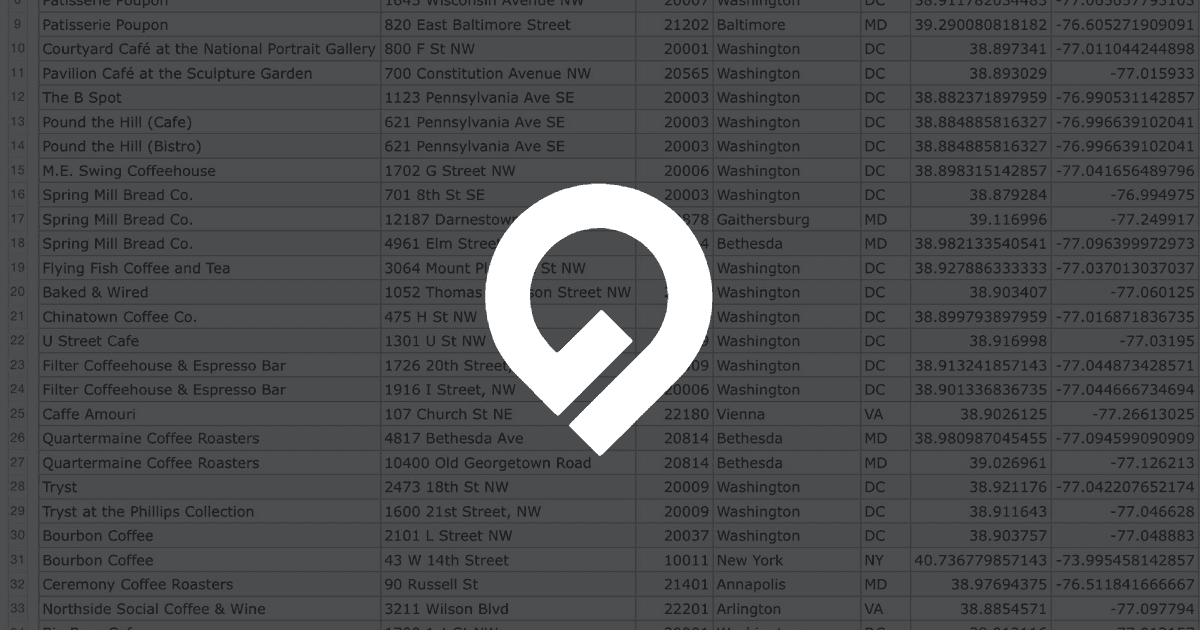 July 21, 2025
July 21, 2025Geocodio Now Grants 100,000 Free Lookup Credits to Journalists
Geocodio will now grant 100,000 free lookup credits to journalists to help power data-driven reporting. All we ask is that you cite us as a source — which you would anyway.
There has never been a greater need for high-quality, data-driven journalism—nor a greater squeeze on the budgets of news organizations. More and more journalists who don’t come from data backgrounds are learning how to work with data in their reporting. At Geocodio, we’d like to help accelerate that reporting and learning.
For over a decade, Geocodio has helped thousands of journalists in the US and Canada work with location data. From helping Injustice Watch standardize and geocode millions of addresses from Chicago court records, to powering ProPublica’s TicketTrap application, to providing a geocoded Paycheck Protection Program loan dataset to Reveal for free, Geocodio has long supported data journalism.
Geocode and map spreadsheets, quickly add Congressional districts, Census data, and more
According to Andrew Ba Tran, Pulitzer-winning investigative data reporter for The Washington Post, in a talk at the National Press Association where he recommended using Geocodio: “The only technical skill you need for effective data journalism, it’s just knowing your way around [a] spreadsheet.”
We couldn’t agree more.
These credits can be used with all of our tools, including geocoding spreadsheets, mapping spreadsheets, and our APIs.
You can do much more than turning addresses into latitude and longitude, though. You can clean up, standardize, and complete messy address data (like InjusticeWatch), add Congressional districts and Member information, state legislative districts and legislators, as well as Census data at multiple geography levels (such as county-level, city-level, and tract level).
Need to see if a federal program is helping people in the lower-income neighborhoods it should be serving? Upload the addresses to Geocodio, check the box for the Census Household Income append, and you’re good to go.
Have a list of geocoordinates from cell phone data from a court filing and need to turn them into addresses so you can actually figure out where they are? You can do that with Geocodio, too.
Need to analyze voting trends by Congressional districts? Again—just your spreadsheet, check the box, and let the analysis begin.
And unlike many geocoders, you’re permitted to store, reuse, and transform geocoded data from Geocodio. This means you can layer on additional data sets and do your own analysis without restrictions.
What’s the catch?
You cite your sources already, so all we ask is that when you use Geocodio in your work, you simply cite us.
Whether that’s in your published reporting, a blog post, or in a workshop that you lead on data reporting.
And please send us a link! We’ll happily share your work.
How to get the credit added to your account
We need to verify that you are who you say you are, and we’re also looking to raise visibility for this program.
So, to get the credits added to your account, all you need to do is:
- Make a post to your LinkedIn account about this program to the effect of “Geocodio is now granting 100,000 credits to journalists for data-driven reporting.” with a link to this post.
- Email us with a link to your post. We’ll then apply the credits to your account.
Your LinkedIn profile should clearly show that you’re a journalist.
For journalism students
If you’re currently enrolled in a journalism program, we’ll grant you 25,000 credits. Please follow the process above. Your LinkedIn profile should show that you are currently enrolled in a journalism program.
Terms and conditions
- Only one grant per journalist.
- Credits may not be transferred between accounts.
- Credits do not expire.
- Credits have no cash value.
- Geocodio already has a 5% discount for non-profits and academic institutions. This credit can be applied in addition to that discount.